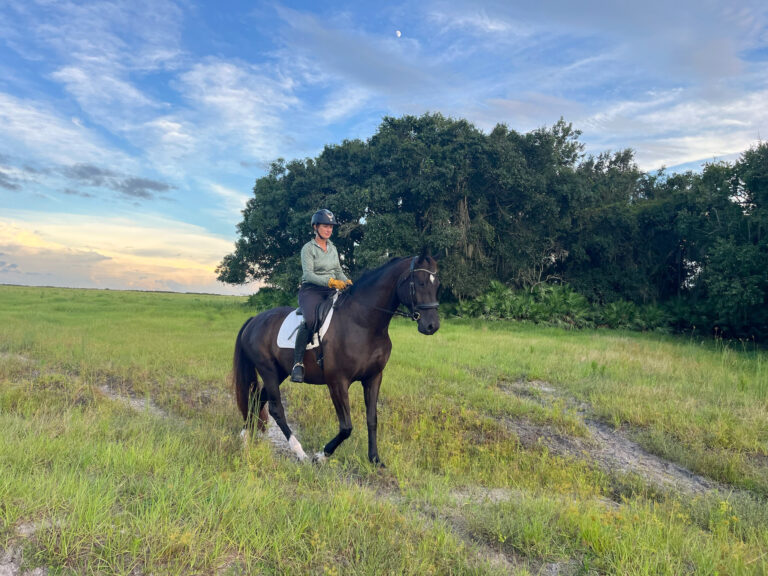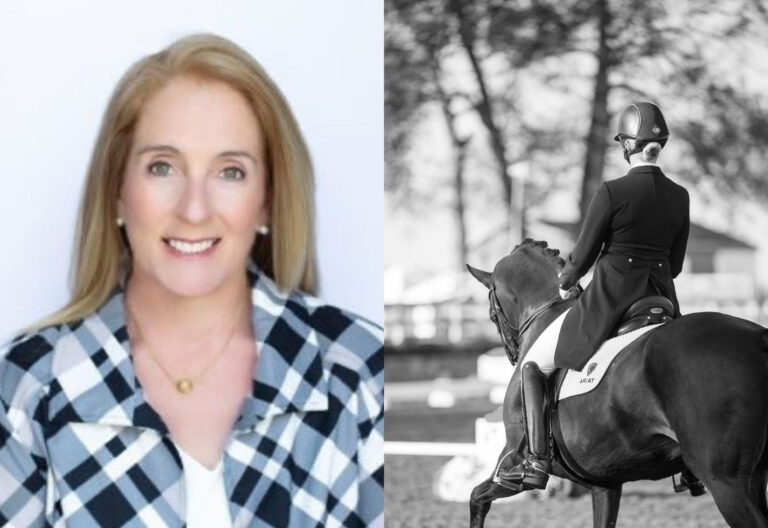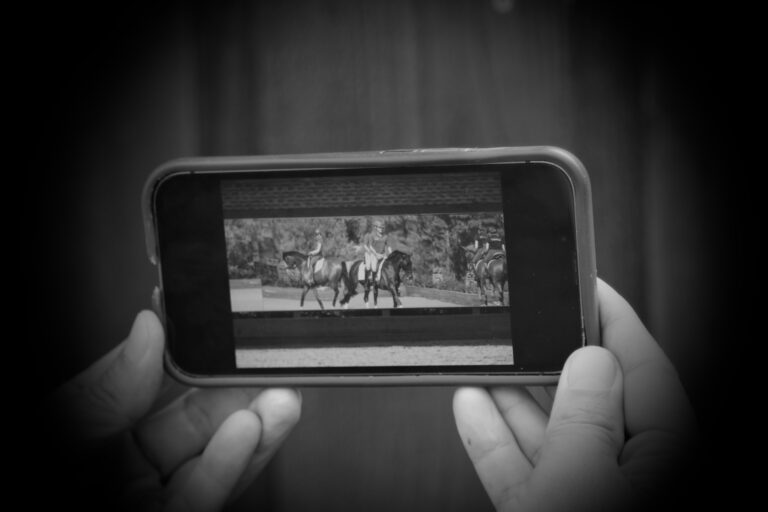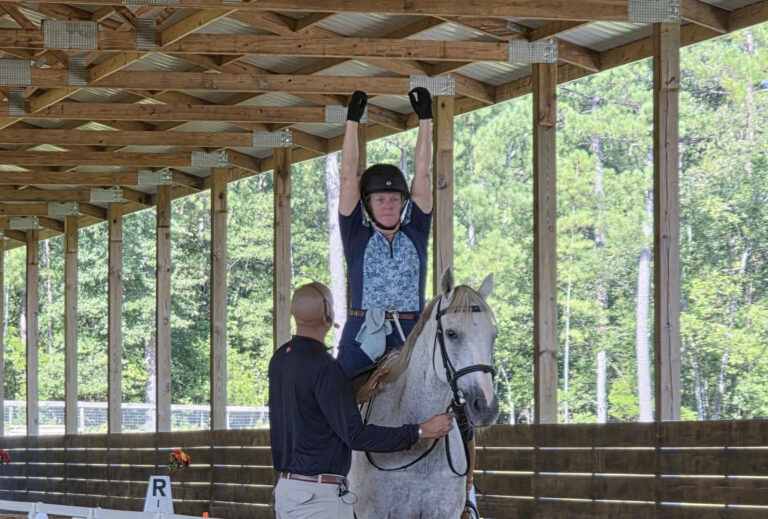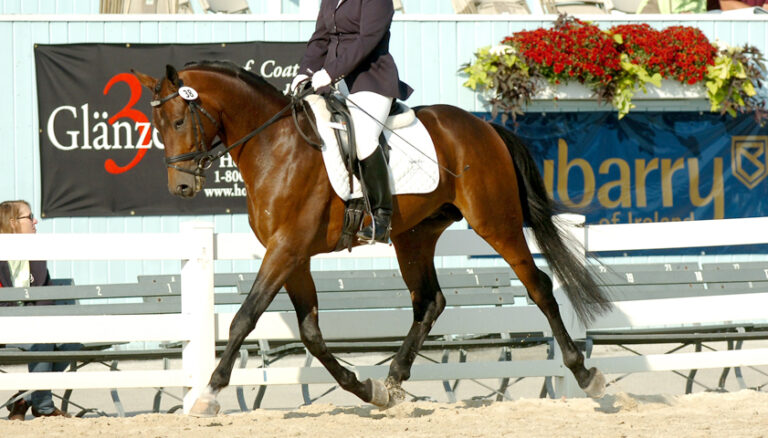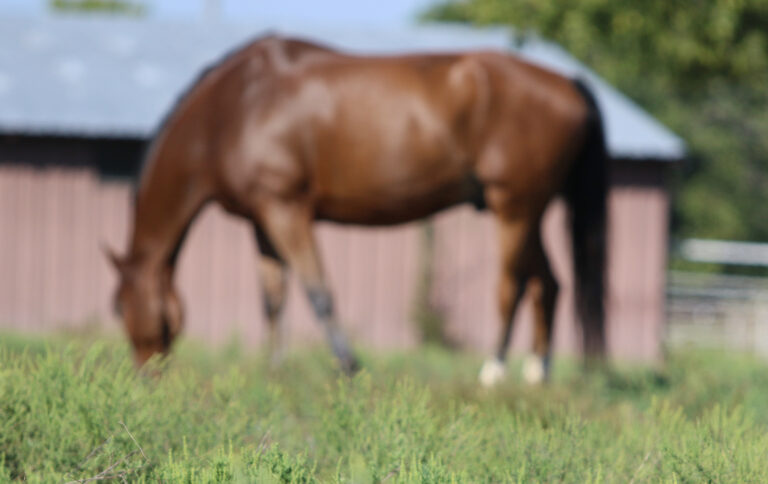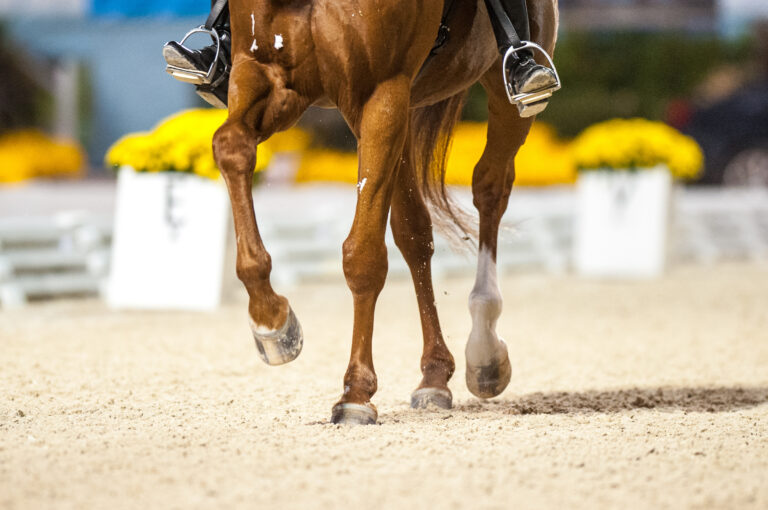Q: My toes are sticking out. As a consequence, I grip with my calves. When I try to turn my legs in, I get really tense in my legs. Is this caused by a tight pelvis? Is my horse’s barrel too wide for me? Could you give me any solutions or a few exercises to help me turn my legs in and stay relaxed?
Name withheld by request
A: Not being able to turn your leg in without creating tightness in the hip and thigh area most likely stems from a misalignment issue. Our muscles and other soft tissue basically do two things: They hold our joints together and allow a certain range of movement at each joint.
The hip joint is a ball-and-socket joint and is positioned slightly angled toward the front. The femur (thigh bone) fits into this joint at a slight diagonal angle toward the knee.
This makes the hip–femur joint more favorable to forward movement than lateral (sideways) movement.
So we have a limited range of motion to the side, and the degree of straddle that your hip and leg structure allows is individual. Consequently, the size of your horse’s barrel may be a consideration.
Most often, however, tight musculature is to blame. If your leg (thigh and lower leg) is turned out in daily life, that becomes your body’s neutral and comfortable leg position, and even though this might not bother you then, it will keep you from comfortably turning your thigh inward when seated on the horse.
Often an everted (turned out) leg position goes hand in hand with an anterior tilt of the pelvis—meaning the pelvis is tipped forward from its neutral position. An anterior pelvic tilt affects the leg position and can artificially force an accentuated outward position of the thigh.
In order to allow your leg the necessary inward rotation on the horse, we have to bring the musculature in the hip and leg back to a neutral position. Here are a few ground exercises that will help:
Static back: Lie on your back and drape your legs over a chair or box, approximately the height of your femur. Let your knees fall out as far as they like, as you stay relaxed at the hip. Bring your arms out by your side at a 45-degree angle to your body, with your palms facing up. Rest there for five minutes. This position allows the spine to unwind, promoting the neutral pelvic position you are looking for.
Active cobra wishbone: Lie on your stomach and prop yourself up on your elbows. Keeping your knees together, bend at the knee and bring your feet off the floor until they are at a 90-degree angle to the thigh. Slowly bring your feet apart as far as you can without letting your hips lift off the floor. This exercise asks the femur for internal rotation on an extended pelvis. Repeat two sets of 20 repetitions.
Sitting upper-spinal floor twist: Sit on the floor with both legs straight. Bend your right leg and place your foot on the floor by your left knee. Keeping your upper body (spine) very straight, rotate it to bring your left shoulder and side toward your right knee. With your left hand, hold on to the right knee to help rotate more. Hold this position for one minute on each side.
IT (iliotibial)-band stretch/Modified IT-band stretch: Lie on your back with your knees bent. Bring your right leg over your left (you are crossing your legs as if sitting in a chair). Slowly let both legs fall to the left. Bring them as close to the floor as you can. Stay on each side for one minute. This exercise stretches the IT band, which is essential in allowing the leg to turn in.
Gravity drop: Using a board fence, hold on to the top rail and place the balls of your feet on the lowest board. Allow your heels to hang down as far as possible. Keep your body straight so your body weight falls into your heels. Squeeze your shoulder blades together and make sure your toes and knees are facing straight ahead. Stay in this position for three minutes.
Foot circles/Point and flex: Lie on your back with your legs straight. Bend one leg at the knee and hold on to the leg with both hands behind the knee. Making sure the lower leg is relaxed, perform circles with the foot (ankle rotations) to the right and to the left. Then point and flex the foot. Start with 10 and work up to doing 40 in each direction. Perform the ankle rotations and flex and point with both feet.
In a neutral hip position, the two seat bones and the pubic bone should carry even pressure. A neutral pelvic position will allow for a more correct and relaxed leg as well as spinal movement. Try these to help you find a neutral pelvic position in the saddle:
• While seated on a quiet horse, place your hands on your knees and keep your arms straight through the entire exercise. Start by rounding your back away from your arms and knees so that you roll behind your seat bones. Then (keeping your arms straight) rock your pelvis forward as far as you can, so that you are arching your back. Go back and forth between these two movements and become aware of the pressure on your seat bones and pubic bone. Start to make the movement smaller and smaller until you are at a point where you feel even pressure on these three points.
• You can also find a neutral pelvic position looking down at your pelvis or with the help of a person watching and helping you from the ground. Locate the front of your pubic bone as well as the tips of your hip bones (they are located approximately where you put your hands in your pockets). When viewed from above or from the side, these three bony landmarks should be in line. If your pubic bone is in front of your hip bones you most likely are seated with your pelvis tipped too far back (chair seat). If your pubic bone is behind your hip bones, your pelvis is tipped too far forward.
Things to think about in daily life:
• Make sure to place your feet and knees so they point straight ahead when you are standing and walking.
• Check the position of your pelvis when seated on the horse. When your pelvis is in a neutral position, it allows the most optimal range of motion of the hip and leg.
Anna Bergenstrahle holds a Master’s degree of science in exercise science and is an Egoscue Certified Postural Alignment Specialist. A native of Sweden, she is based in Osprey, Florida, and specializes in postural alignment for riders.


